Your guide to the night sky this month
2 Thursday
Naked-eye comet C/2022 E3 ZTF is located 5° southeast of the magnitude +4.2 open cluster Collinder 464 in Camelopardalis this morning.
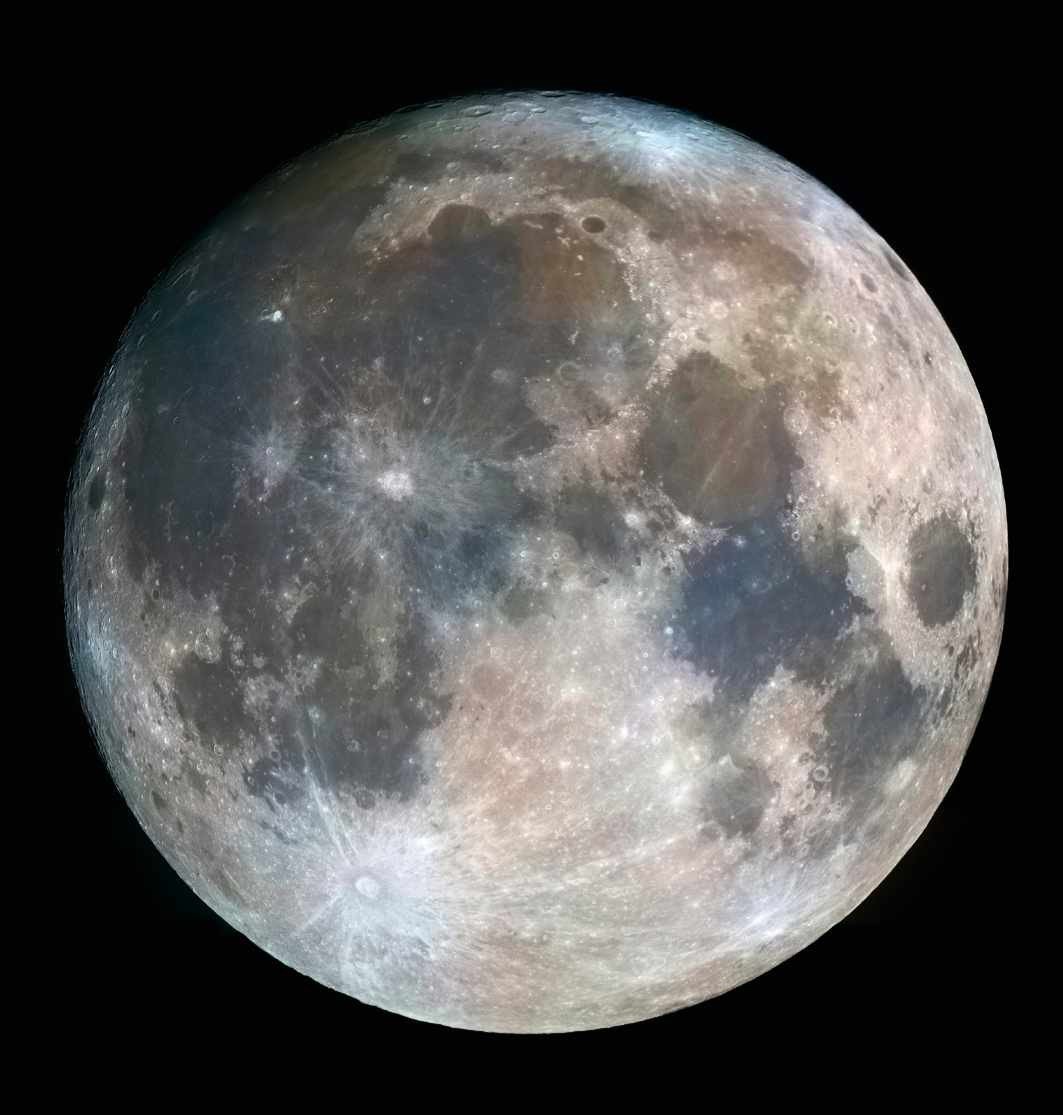
5 Sunday
Today’s full Moon occurs near apogee – known as a ‘micromoon’.
Mars and Aldebaran (Alpha (α) Tauri) have a conjunction in right ascension, Mars 8.2° north of the star.
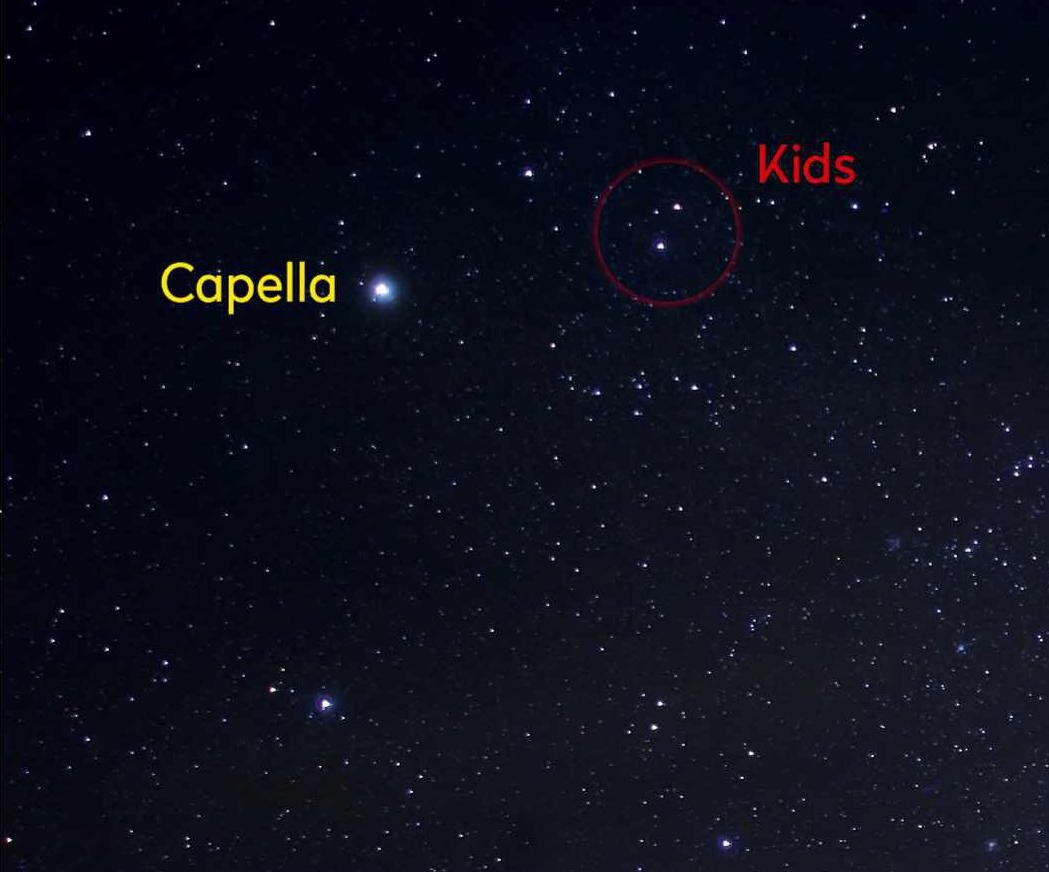
6 Monday
This evening and into tomorrow morning, mag. +5.3 comet C/2022 E3 ZTF is heading south past the Kids asterism in Auriga, a pattern representing baby goats.
8 Wednesday
This evening and into tomorrow morning, still just clinging onto naked-eye visibility, mag. +5.6 comet C/2022 E3 ZTF is less than a degree west of mag. +2.7 Hassaleh (Iota (ι) Aurigae).
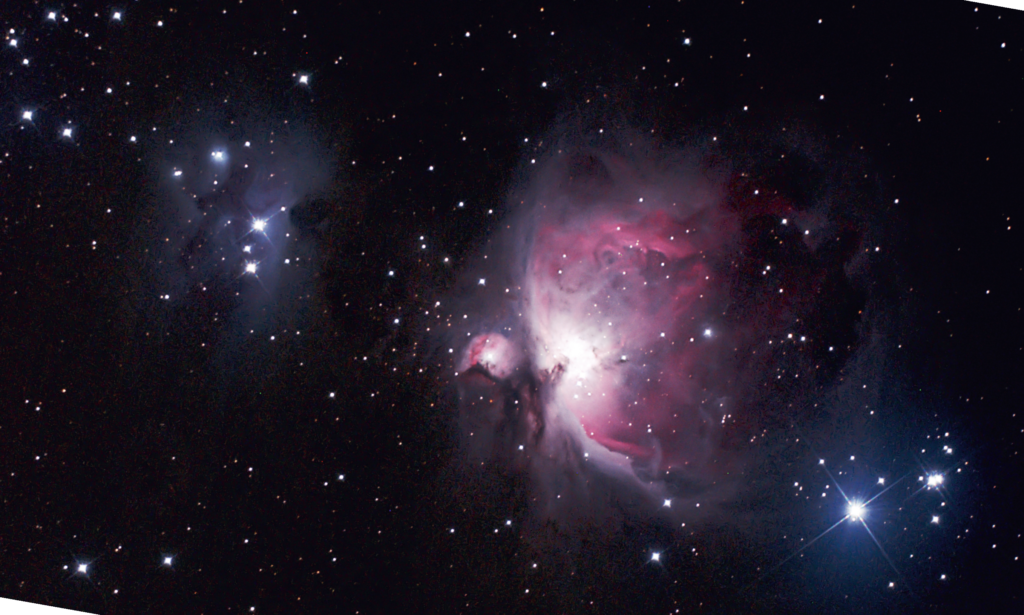
9 Thursday
As the Moon moves out of the way, now is the time to try our Deep-Sky Tour. This month we’re looking at objects in and around Orion’s Sword.

11 Saturday
The period from this morning through to tomorrow evening sees sixth-magnitude comet C/2022 E3 ZTF having a close encounter with Mars.
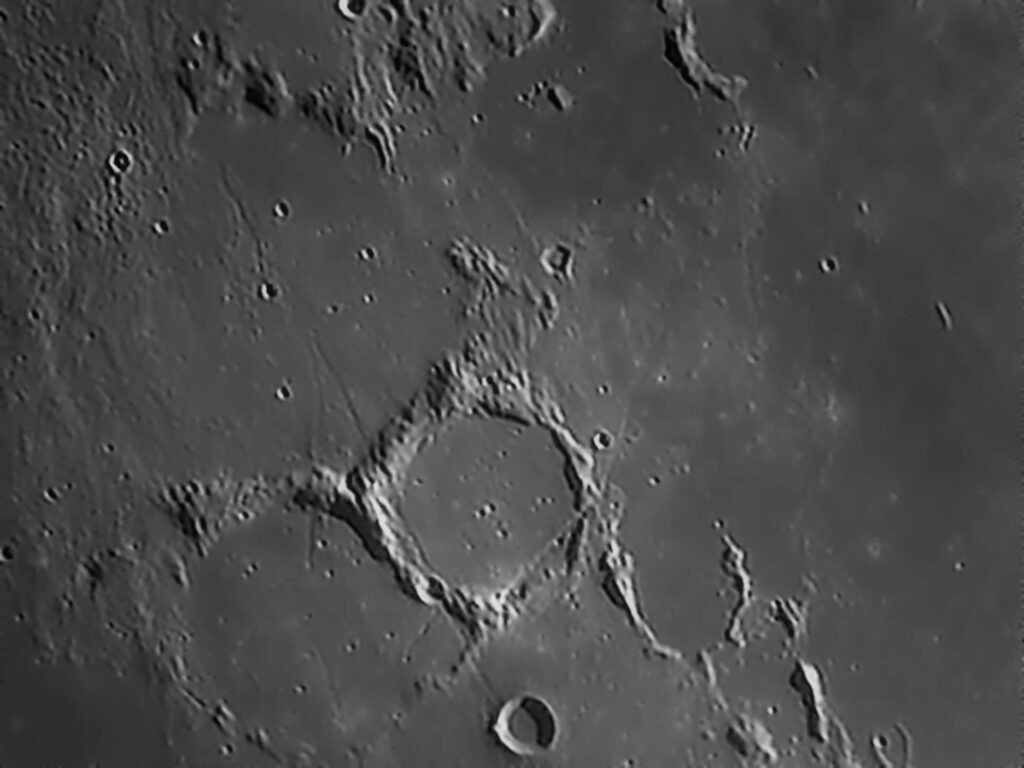
12 Sunday
Follow our Moonwatch target, Fra Mauro and craters around it (Bonpland and Parry pictured above) this morning through to the morning of 14 February.
13 Monday
Comet C/2022 E3 ZTF passes just west of the mag. +6.4 open cluster NCG 1647 in Taurus this evening. The cluster and comet are located east of the Hyades open cluster.
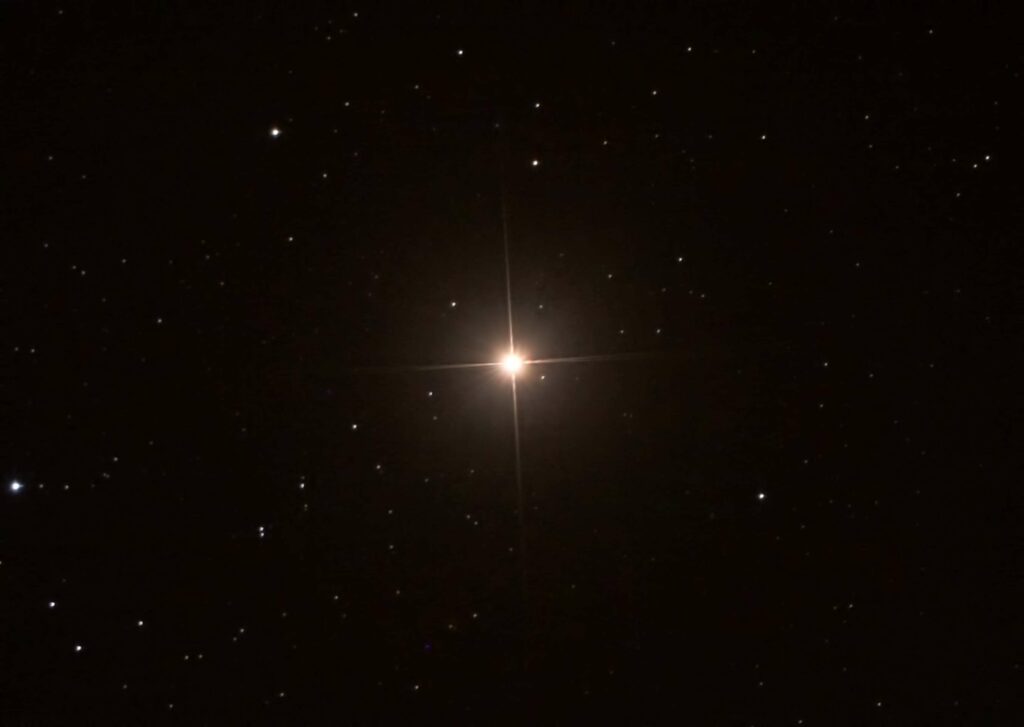
14 Tuesday
This evening and into tomorrow morning, comet C/2022 E3 ZTF is located less than 2° east of Aldebaran.
15 Wednesday
Venus and Neptune have a close encounter. As darkness falls, the pair appear 20 arcminutes apart, low above the western horizon. Earlier in the day, at around 12:26 UT in daylight, the pair were just 47 arcseconds apart!
16 Thursday
A fairly favourable libration of the Moon can be seen today, tilting the western limb towards Earth. This provides a good view of features such as the Mare Orientale.

18 Saturday
Fading comet C/2022 E3 ZTF is travelling on a southward path west and roughly parallel to the faint but distinctive line of stars formed by Pi 1(π 1) to Pi 6(π 6) Orionis.
20 Monday
The beautiful open cluster M35 reaches its highest position in the sky, due south, around 20:00 UT. The cluster is just visible to the naked eye, and a real treat through binoculars or a small scope.
22 Wednesday
A lovely scene this evening, as the 8%-lit waxing crescent Moon sits midway and slightly below the imaginary line joining Jupiter to Venus low in the west-southwest after sunset.
26 Sunday
This evening’s 44%-lit waxing crescent Moon sits 2.7° from the Pleiades open cluster. Catch the pair at their best just after darkness falls.
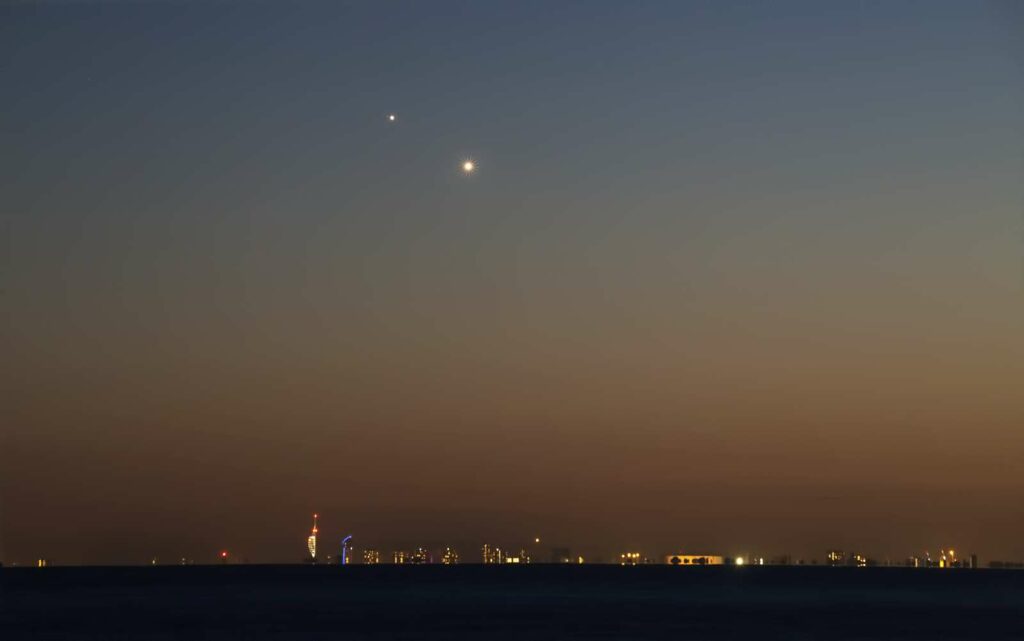
27 Monday
As we head towards the end of February, Venus and Jupiter appear to be closing in on one another quite rapidly, ahead of their closest separation of 38 arcminutes on 1 March.
28 Tuesday
Mars and the Moon appear close in the morning sky, and continue to get closer as they approach setting at the northwest horizon. An occultation does occur, but sadly after they have both set from the UK.
Family stargazing
Bright planets Venus and Jupiter are easy to find in the evening twilight, low in the west after sunset. Wait for the Sun to properly set then set a task: who can spot the planets first? If the weather is reasonable, aim to start looking on every available evening from 20 February through to 10 March. It’s unlikely they will all be clear though. Suggest drawing the arrangement seen on each evening using a finger held out at arm’s length for scale. The Moon will join the scene around 21–23 February, adding a bit of extra excitement.
bbc.co.uk/cbeebies/shows/stargazing
NEED TO KNOW
The terms and symbols used in The Sky Guide
Universal Time (UT) and British Summer Time (BST)
Universal Time (UT) is the standard time used by astronomers around the world. British Summer Time (BST) is one hour ahead of UT
RA (Right ascension) and dec. (declination)
These coordinates are the night sky’s equivalent of longitude and latitude, describing where an object is on the celestial ‘globe’
Naked eye
Allow 20 minutes for your eyes to become dark-adapted
Photo opp
Use a CCD, planetary camera or standard DSLR
Binoculars
10×50 recommended
Small/ medium scope
Reflector/SCT under 6 inches, refractor under 4 inches
Large scope
Reflector/SCT over 6 inches, refractor over 4 inches
GETTING STARTED IN ASTRONOMY
If you’re new to astronomy, you’ll find two essential reads on our website. Visit bit.ly/10_easylessons for our 10-step guide to getting started and bit.ly/buy_scope for advice on choosing a scope